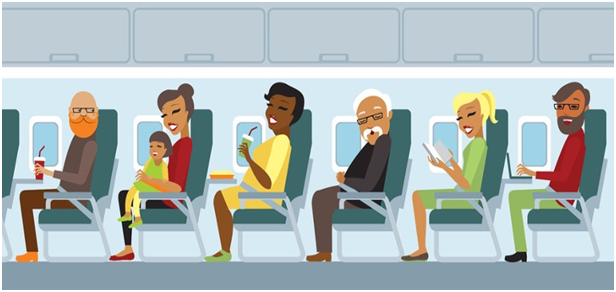Did you know that there are 2.8 billion global social media users around the world? Or that over half of the world's population uses the internet regularly? If you are an airline, chances are your passengers and potential passengers are looking you up online and researching your brand before they book a ticket with you.
Modern trends in the aviation industry are re-shaping airline business models. Airlines of all types and sizes are competing to distinguish themselves in the eyes of potential passengers. When prices and routes are similar, offering the best customer service is a great way to have your airline stand out from the rest of the competition.
Your passengers are most definitely talking about you, and increasingly these conversations are happening online. Your airline wants these conversations to be positive so that people are encouraged to fly with you rather than discouraged. This global shift towards digital means that social media marketing has emerged as a powerful tool for transforming sales...if you use it properly.
Follow these 4 easy steps to excellent customer service and social media success and your passengers AND future passengers will be bragging about your airline all over the web in no time!
How Can Social Media Give Your Airline a Competitive Advantage?
 The best thing about social media is that it continues to evolve with time, with new features and new platforms being added constantly that make things easier and more effective for you and your followers . Your airline's use of social media isn’t just limited to advertising or answering questions anymore. New technology could pave the way forward in completely transforming the social media presence for your airline.
The best thing about social media is that it continues to evolve with time, with new features and new platforms being added constantly that make things easier and more effective for you and your followers . Your airline's use of social media isn’t just limited to advertising or answering questions anymore. New technology could pave the way forward in completely transforming the social media presence for your airline.
Today's customer expects to be able to interact with your airline twenty four hours a day, everyday (even over the weekends, and during holidays!) Your airline will undoubtedly receive time sensitive queries by passengers requiring special assistance. As you know, severe weather can affect flight schedules at any time, and a passenger may want to follow up on a concern, track cargo, or simply need a question answered about a connecting flight. Your airline should have somebody there listening to what your passengers want and need and responding to them in real-time in order to ease their minds and provide excellent customer service.
It is important to give your customers freedom to do things the way that they feel most comfortable doing them. This extends from flight booking all the way to the check-in and boarding processes. Some passengers will prefer to speak in person or on the phone to an airline agent, while others will want to do everything quickly and independently from their phone or computer. New social media features like chatbots can completely transform the experience a passenger will have with your airline. Passengers can use tools like chatbots to check-into their flight over social media networks such as Facebook Messenger. The important thing is to give your passengers options so that they have the freedom to check-in the way that works best for them and their lifestyle. Giving your passengers these options also has the potential to save them time at the airport as there will be less people waiting in line to check in with the agent. Less time waiting in airport lines = happier passengers!
Your airline can take advantage of social media extensions to offer your passengers extra services they may want to purchase from you, which will help them to tailor their airline experience to their personal preferences. Some examples of ancillary items you may want to offer your passengers or inform your passengers of over social media are: special handling, pre-ordered meals, extra checked baggage, or specialty snacks. Your airline can also use social media to keep passengers up to date by sending out personalized flight information in real-time right to their social media accounts and smartphones.
In the words of George Bernard Shaw "The single biggest problem in communication is the illusion that it has taken place." Never assume that your passengers have all the information they need to enjoy their flight (and trip) to the fullest, make sure that they do!
A very easy way to get started on this is to communicate weather to your passengers. Weather can be communicated from the time that your passenger first books their flight so that they know what type of weather to pack for at their destination, and can extend all the way up to weather forecasts for their entire flight route so they know if there will be flight delays, cancellations or turbulence. Another easy way your airline can start using social media to communicate with passengers is to use it as a channel to send out special deals you are offering, the latest promotions you are running, airport information, and personalized flight information to booked passengers via social media.
With such a high percentage of people around the world using social media networking sites on a daily basis, social media has grown to become a force to be reckoned with. Harnessing this power is not only an asset in reaching out to potential customers, but also in establishing brand awareness, building loyalty, and getting in on word of mouth marketing. It is imperative that your airline gets the word out there about your services, special offers, and ultimately your world-class customer service to become your passenger's airline of choice. If you aren't talking to and delighting your passengers, you can be sure that another airline will be.
If it isn't already, your airline should strongly consider making social media marketing a key focus area for your marketing and communications team- especially if your goal is to achieve unparalleled traffic growth for your airline in the future!









